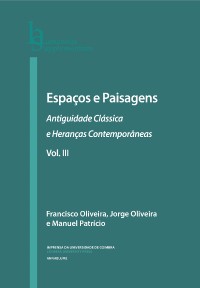Please use this identifier to cite or link to this item:
https://hdl.handle.net/10316.2/31556| DC Field | Value | Language |
|---|---|---|
| dc.contributor.author | Chora, Ana Margarida | |
| dc.date.accessioned | 2014-06-24T09:55:43Z | |
| dc.date.accessioned | 2020-09-21T02:25:55Z | - |
| dc.date.available | 2014-06-24T09:55:43Z | |
| dc.date.available | 2020-09-21T02:25:55Z | - |
| dc.date.issued | 2012 | - |
| dc.identifier.isbn | 978-989-26-0292-9 (PDF) | |
| dc.identifier.uri | https://hdl.handle.net/10316.2/31556 | - |
| dc.description.abstract | Moira-fairy is a legacy from Classical Antiquity in the Middle Ages, the same character in Gallo-Roman, Celtic and Iberian cultures, which appears associated with two types of space: the first one, a generally undefined water space of chthonic connection (lakes, fountains, rivers, wells and hollows), where the fairy changes into a serpent, such as Sybil, prophetess from classical period and fairy in French texts from XIII and XIVth centuries. This changing skill links her to another important fairy in Celtic world: Morgan le Fay. The second space type is the result of Gallo-Roman (both Celtic and Roman) and Arab mythologies fusion in Iberian territory, which appears in Iberian-Arab imaginary under the spell of charming Moorish maidens (who offer paradise in return of freedom, as the dangerous Gallo-Roman fairies). These fairies don’t come directly from Arab culture, but from Gallo- Roman heritage and Greek Moirae, who, as Celtic fairies, were responsible for life’s destiny. Therefore, Moira-fairy is classical feminine evidence, who rules a space dominated by different cultures. | eng |
| dc.language.iso | por | - |
| dc.publisher | Imprensa da Universidade de Coimbra | por |
| dc.publisher | Associação Portuguesa de Estudos Clássicos | por |
| dc.publisher | Centro de Estudos Clássicos e Humanísticos | por |
| dc.relation.ispartof | http://hdl.handle.net/10316.2/2376 | por |
| dc.rights | open access | - |
| dc.subject | Celtic | eng |
| dc.subject | Fairy | eng |
| dc.subject | Gallo-Roman | eng |
| dc.subject | Iberian | eng |
| dc.subject | Sybil | eng |
| dc.subject | Water | eng |
| dc.subject | Água | por |
| dc.subject | Celta | por |
| dc.subject | Fada | por |
| dc.subject | Galo-romano | por |
| dc.subject | Peninsular | por |
| dc.subject | Sibila | por |
| dc.title | A fada-moura: do espaço galo-romano ao espaço peninsular | por |
| dc.type | bookPart | por |
| uc.publication.firstPage | 197 | - |
| uc.publication.lastPage | 203 | - |
| uc.publication.location | Coimbra | por |
| dc.identifier.doi | 10.14195/978-989-8281-69-2_15 | - |
| uc.publication.digCollection | PB | por |
| uc.publication.orderno | 15 | - |
| uc.publication.area | Artes e Humanidades | por |
| uc.publication.bookTitle | Espaços e paisagens: antiguidade clássica e heranças contemporâneas: Vol.3 História, Arqueologia e Arte | - |
| uc.publication.manifest | https://dl.uc.pt/json/iiif/10316.2/31556/227245/manifest?manifest=/json/iiif/10316.2/31556/227245/manifest | - |
| uc.publication.thumbnail | https://dl.uc.pt/retrieve/11421463 | - |
| uc.publication.parentItemId | 52059 | - |
| uc.itemId | 73594 | - |
| item.grantfulltext | open | - |
| item.fulltext | With Fulltext | - |
| Appears in Collections: | Espaços e paisagens: antiguidade clássica e heranças contemporâneas: Vol.3 História, Arqueologia e Arte | |
Files in This Item:
| File | Description | Size | Format | |
|---|---|---|---|---|
| 15-_espa_os_e_paisagens.pdf | 200.03 kB | Adobe PDF |  |
Items in DSpace are protected by copyright, with all rights reserved, unless otherwise indicated.
